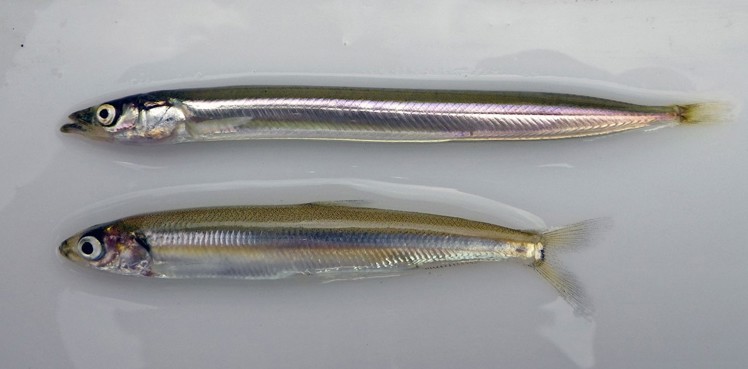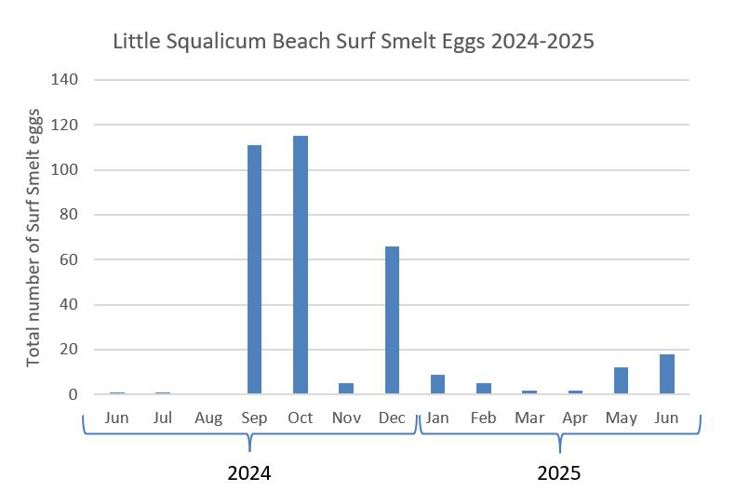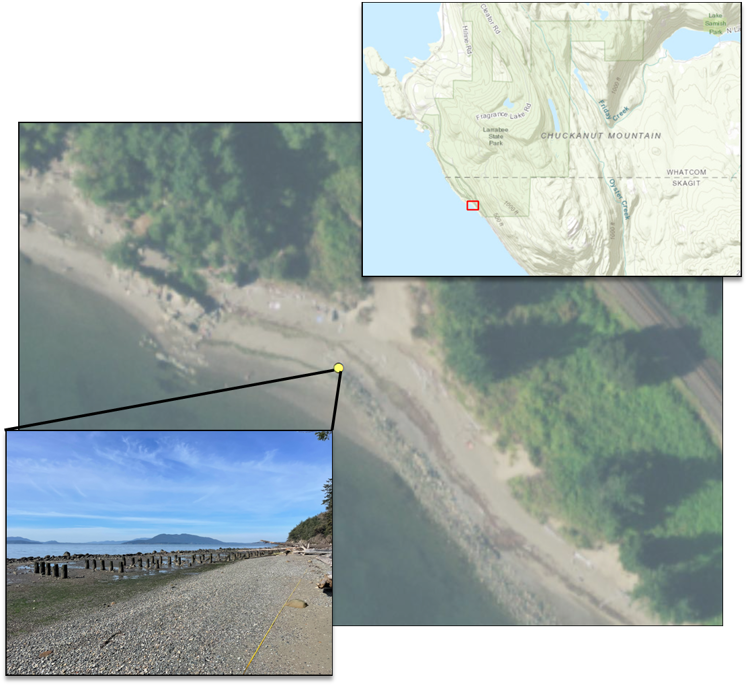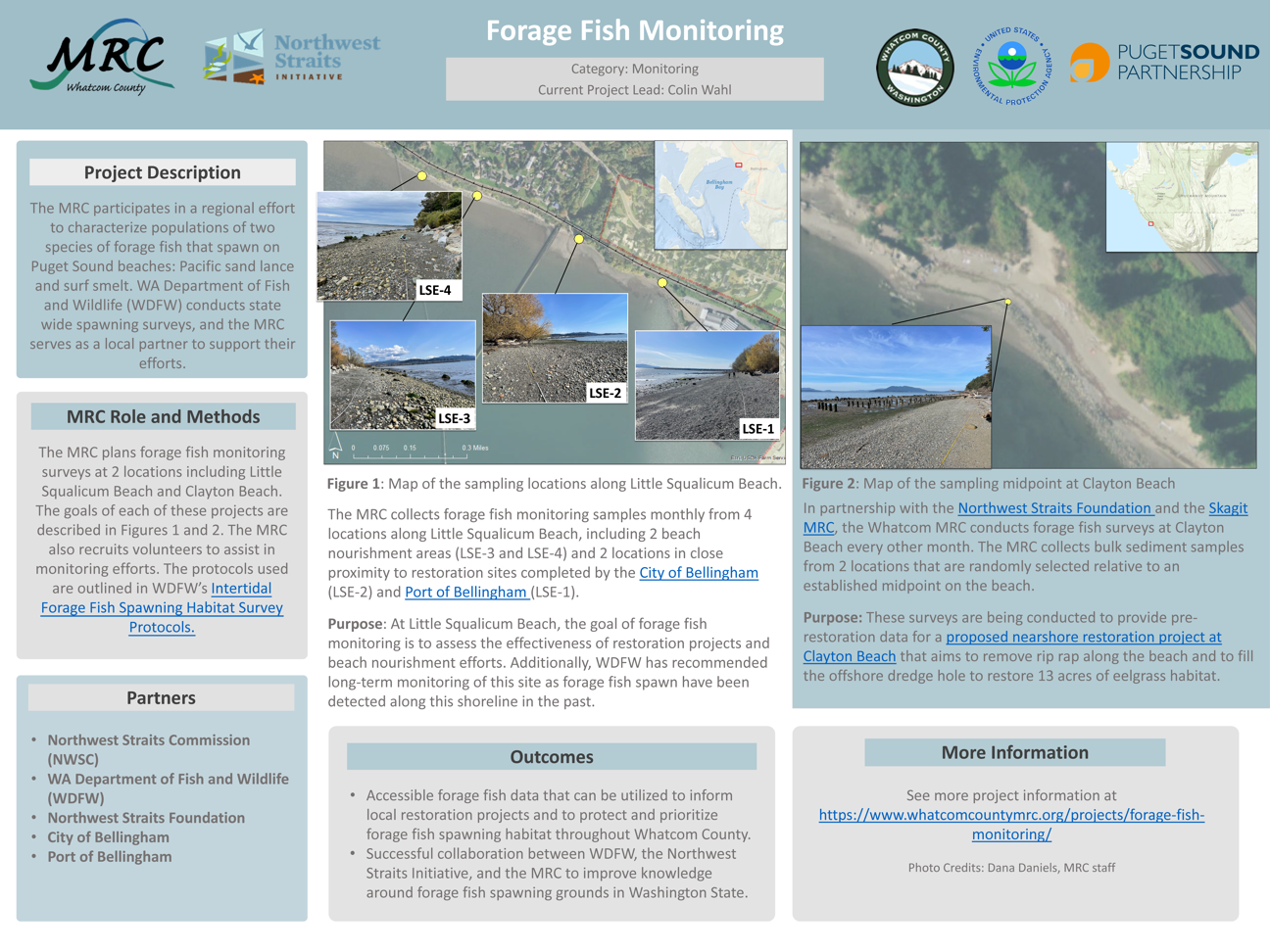 Photo from the USGS
Photo from the USGS
Forage Fish Monitoring
 Photo from the USGS
Photo from the USGS
The MRC conducts forage fish monitoring surveys at 2 locations including Little Squalicum Beach and Clayton Beach. The MRC also recruits volunteers to assist in monitoring efforts. The protocols used are outlined in WDFW’s Intertidal Forage Fish Spawning Habitat Survey Protocols.

Little Squalicum Beach
The MRC collects forage fish monitoring samples monthly from 4 locations along Little Squalicum Beach, including 2 beach nourishment areas (LSE-3 and LSE-4) and 2 locations in close proximity to restoration sites completed by the City of Bellingham (LSE-2) and in progress by the Port of Bellingham (LSE-1).
The goal of forage fish monitoring at Little Squalicum Beach is to assess the effectiveness of restoration projects and beach nourishment efforts. Additionally, WDFW has recommended long-term monitoring of this site as forage fish spawn have been detected along this shoreline in the past.

Graph shows surf smelt eggs found at Little Squalicum Beach from 2024-2025. Total number of surf smelt eggs represent the combined counts at each of the 4 sites along Little Squalicum Beach, but site LSE-1 had the majority of the eggs. Data from 2025 only goes until June as WDFW has not yet processed the samples from July-September of 2025 due to capacity limitations.

Clayton Beach
In partnership with the Northwest Straits Foundation and the Skagit MRC, the Whatcom MRC conducts forage fish surveys at Clayton Beach every other month. The MRC collects bulk sediment samples from 2 locations that are randomly selected relative to an established midpoint on the beach.
These surveys are being conducted to provide pre-restoration data for a proposed nearshore restoration project at Clayton Beach that aims to remove rip rap along the beach and to fill the offshore dredge hole to restore 13 acres of eelgrass habitat.
Only 2 surf smelt eggs have been found at Clayton Beach since the surveys began in October of 2023.
